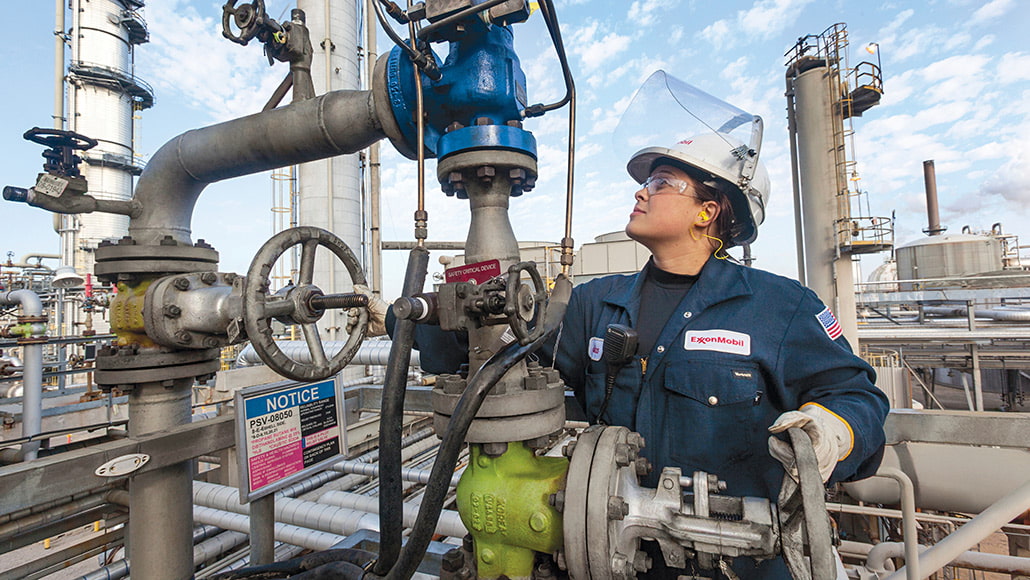Earnings and Profits at ExxonMobil
May 26, 2025 By Kelly Walker
One of the world's largest oil firms is ExxonMobil Inc. (XOM). Its primary focus is on the oil and gas industries, including exploration, production, processing, distribution, and marketing of crude oil and petrochemicals.
It has an upstream oil and gas operation, a downstream oil and gas operation, and a chemicals business. The energy and petrochemical industries in which ExxonMobil operates are among the most competitive in the world. Competitors come from both the commercial sector and government-owned enterprises.
Competitors of ExxonMobil include Royal Dutch Shell PLC of the Netherlands and BP PLC of the United Kingdom. Total S.E. Chevron Corp. of France and Saudi Arabian Oil Co., more often known as Saudi Aramco, are two of the world's largest oil companies.
Budgeting at ExxonMobil

Financial results for ExxonMobil's fiscal year (FY) 2021, which concluded on December 31, 2021, were released in early February. A year after suffering a net loss of $22.4 billion, the corporation has reported a net profit of $23.0 billion for its stockholders.
An impressive comeback from the previous year's pandemic-depressed lows, annual revenue increased by 57.4% to $285.6 billion. 4 Sales and other operational revenue (97%) plus income from equity affiliates (2%) and other income (1%) make up ExxonMobil's total revenue.
The United States accounted for 38% of all sales and other operational revenue, while the rest of the globe, headed by Canada, Singapore, and the United Kingdom, accounted for 62%. 5
Business Units of ExxonMobil
To accomplish its goals, ExxonMobil divides its operations into three main divisions:
- Upstream
- Downstream
- Chemical
It details each division's sales, other operational revenue, and profitability. The corporate and financing sector includes general administrative support services, financing, and insurance operations in support of the operating segment and its results are included in the report as well.
This division's income was negligible, while its losses were $2.6 billion. The corporate and financing section is not included in the above pie charts, nor are negative numbers shown in the segment breakdowns that follow.
Upstream

ExxonMobil has operations on a global scale, and each day it pumps out millions of net oil and natural gas barrels. The company's upstream operations include exploration, development, production, and sales. It has five distinct value chains:
- Deepwater
- Unconventional
- LNG
- Heavy crude oil
- Conventional8
After losing $20.0 billion in FY 2020, the Upstream division turned a profit of $15.8 billion in FY 2021. It contributed almost 61% of all segments' earnings. The division's sales and operating revenue increased by 49.8 percent to $21.8 billion, or nearly 8 percent of the full-year total.
Downstream
ExxonMobil produces and sells millions of barrels of petroleum products daily, making it a market leader in the gasoline industries. The Downstream division sells high-quality goods like Mobil 1 synthetic to customers worldwide.
From a deficit of $1.1 billion in FY 2020, the Downstream division turned a profit of $2.1 billion in FY 2021. Earnings from this division were around 8% of the total for all divisions.
More than 79% of the company's overall sales and operational revenue comes from this division. In FY 2020, sales and other operating revenue increased by 54.7 percent, totaling $218 billion.
Chemical
ExxonMobil is a leading global chemical manufacturer with annual sales in multi-millions of metric tons. Olefins, polyolefins, aromatics, and other petrochemicals are only some of the products that comprise the Chemical division's extensive product portfolio.
The segment's operations are tightly intertwined with the Upstream and Downstream divisions of the corporation. In FY 2021, the Chemical division reported $7.8 billion in profits, a year-over-year increase of 297.1%.
The segment was responsible for more than 30% of overall earnings. The division's sales and operating revenue increased by 59.6% yearly, totaling $36.9 billion, or almost 13% of the company's overall revenue.
Latest Changes at ExxonMobil
ExxonMobil has decided to begin winding down activities at the Sakhalin-1 project on March 1, 2022. The corporation said it was not planning any more investments and instead taking steps to abandon the project.
In its earnings media release for the fourth quarter and fiscal year 2021, the firm disclosed on February 1, 2022, that it had begun share repurchases in the first quarter of FY 2022 in connection with its previously announced gun buyback of up to $10 billion over one to two years.

How Mortgage Points Work

10 Best Small Personal Loan Options for 2020

What is a Credit Limit

Municipal Bonds vs. Taxable Bonds and CDs: How Do They Compare?

Buying a Home: The Difference Between Cash vs. Mortgage

Best Used Car Sites for 2023

Difference between 457 Plan and 403(b) Plan

Easiest Credit Card to Get Approved for

Best Wells Fargo Credit Cards

Impact of Basel III rules on bank investment

Difference Between Series EE and Series I U.S. Savings Bonds
